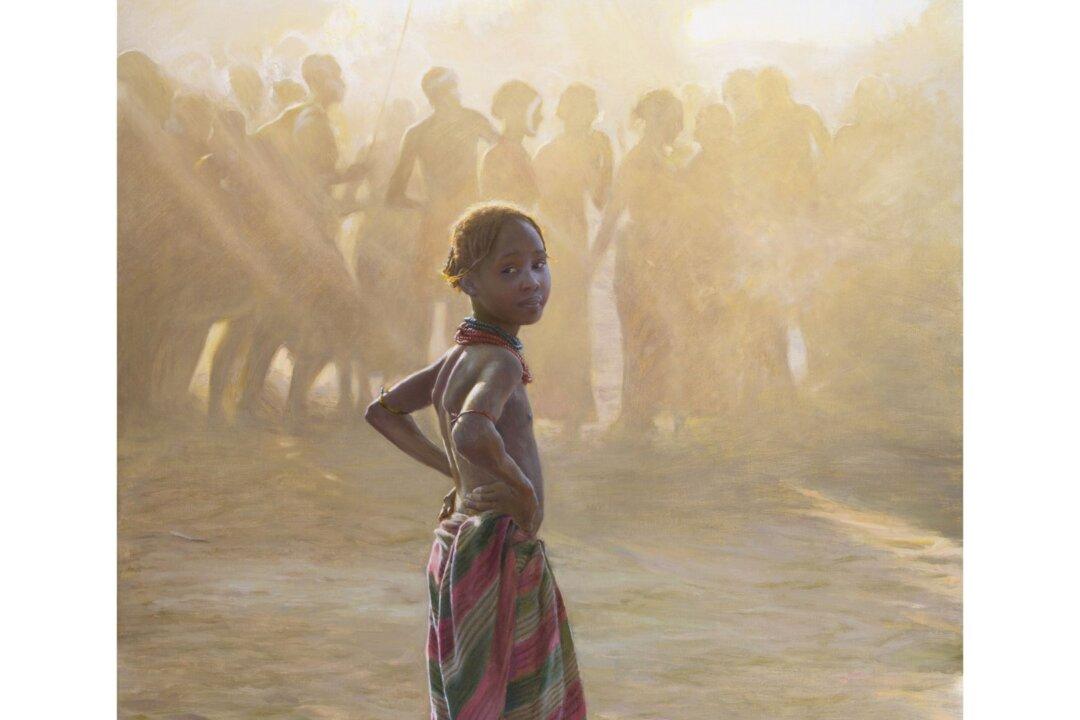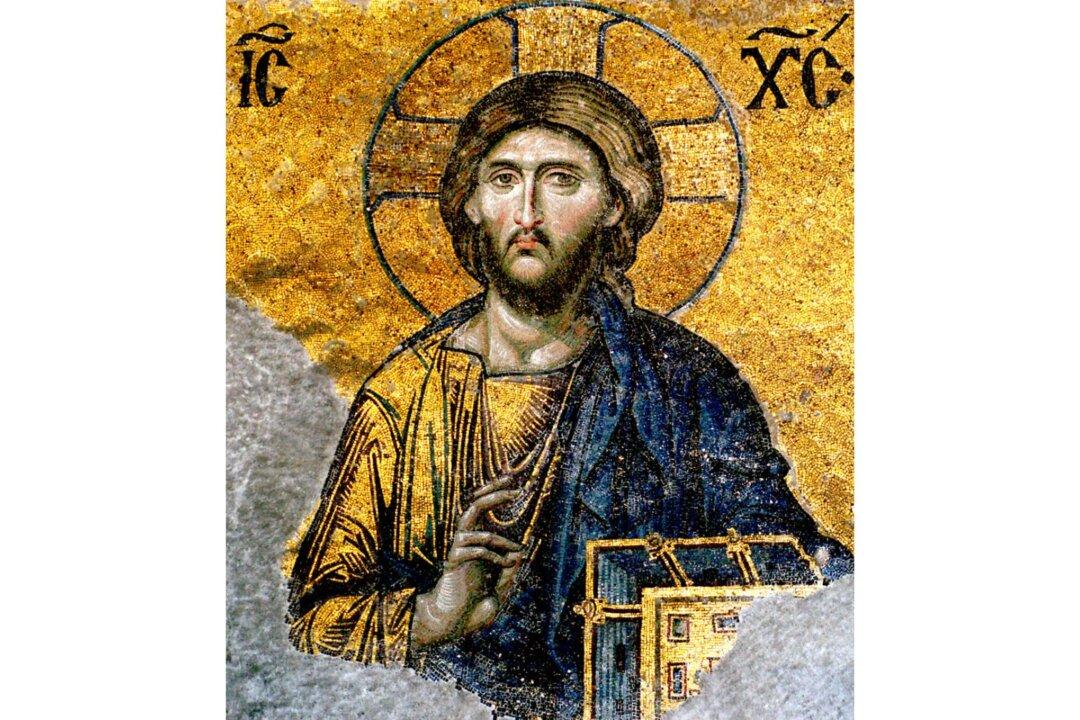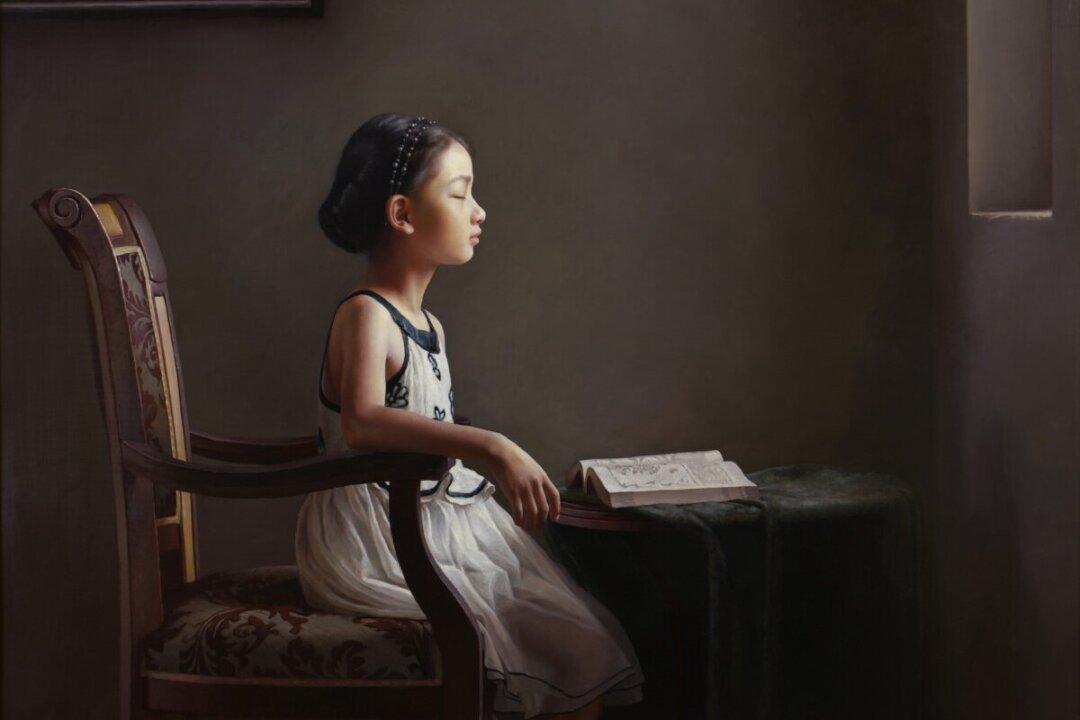In Raphael’s lifetime, early 16th-century artists and art aficionados could encounter Raphael’s art via prints. For those who were unable to travel to Rome or Florence where his art flourished, or who didn’t have access to his art in private or ecclesiastical collections, these prints took his fine art to them.
Raphael realized the power of printmaking to effectively show his classically inspired designs of complex, multifigured compositions to an international audience. Indeed, he may have been the first artist to use printmaking as a marketing tool.

"Il Morbetto (The Plague)," circa 1512/1513, by Marcantonio Raimondi after Raphael. Engraving sheet (trimmed to plate mark): 7 11/16 inches by 9 15/16 inches. Gift of W.G. Russell Allen, National Gallery of Art, Washington. National Gallery of Art, Washington
Engraver Marcantonio Raimondi made engravings for Raphael, and “after Raphael” meant that he copied from or was influenced by Raphael’s designs. According to art historian Giorgio Vasari, Raimondi started working with Raphael after Raimondi made a copper engraving of Raphael’s drawing “Lucretia,” a beautiful lady from ancient Rome.
Raimondi’s “Lucretia” was rendered “with such diligence and in so beautiful a manner,” wrote Vasari, that when Raphael’s friends showed the engraving to him, he immediately saw the potential of printmaking for publishing and disseminating some of his designs to a wider audience.
Raphael’s drawing “The Judgement of Paris” was one of the first engravings Raimondi executed for him, around 1510, and one where Raimondi’s skill with the burin (an engraving tool) shone through. The engraving was done in “such a manner that amazed all of Rome,“ Vasari wrote. The engraving marked the beginning of a fruitful endeavor for both Raphael and Raimondi.
Raphael owned the plates that Raimondi engraved for him, and he tasked an assistant to market and sell the prints. After Raphael’s early death in 1520, Raimondi continued to make engravings after Raphael’s designs.
So remarkable was Raimondi’s work that Vasari included Raimondi’s biography in his book “Lives of the Artists,” the only printmaker biography in the edition.
Prints by Design
Two fine examples of Raimondi’s engravings are “The Massacre of the Innocents” and “Apollo on Parnassus.” Both designs are of historic subjects.Raphael’s drawing “The Massacre of the Innocents” was rendered specifically to be made into an engraving to show his virtuosity; it acted as a calling card of sorts. The drawing depicts the biblical story of Herod, who ordered all male infants in Bethlehem murdered. The scene, although ancient, is set in contemporary Rome, with the Ponte Fabricio in the background.

"The Massacre of the Innocents," circa 1511, by Marcantonio Raimondi after Raphael. Engraving sheet (trimmed within plate mark); 11 1/16 inches by 17 1/16 inches. Print Purchase Fund, Rosenwald Collection, National Gallery of Art, Washington. National Gallery of Art, Washington
In “The Massacre of the Innocents” print, made around 1511, Raimondi’s stunning engraving shows Raphael’s exquisite ability to capture a dreadful scene and yet somehow imbue it with beauty, grace, and harmony. Even though the drawing is clearly macabre, Raphael’s multiple figures move as if engaged in some serene dance. The print is known as one of the best works of the Raphael-Raimondi partnership.
In Raphael’s famous fresco “The Parnassus,” the artist depicted the Greek god Apollo on his sacred Mount Parnassus, which is also the home of the Muses. Mount Parnassus was renowned as a place of great learning, so Raphael’s vision of this sacred place is a community where all manner of ancient wise men and the Muses gather together. The fresco is in the Raphael Rooms, previously the papal apartments, in the Vatican Museums.

"The Parnassus," 1511, by Raphael, in the Raphael Rooms at the Vatican Museums. Public Domain

"Apollo on Parnassus," 1515/1520, by Marcantonio Raimondi after Raphael. Engraving sheet: 14 1/2 inches by 19 1/16 inches. Ailsa Mellon Bruce Fund, National Gallery of Art, Washington. National Gallery of Art, Washington
The fresco differs from Raimondi’s engraving “Apollo on Parnassus” executed around 1515 or 1520. In the engraving, putti (naked baby boys) fly high, holding laurel-leaf wreaths. Raimondi’s Apollo holds a lyre rather than a viola as in Raphael’s fresco, for example. And although the main composition of the scene is similar in both, many of the figures’ postures and positions differ slightly.
Both of these engravings are part of a wider exhibition: “Raphael and His Circle” at the National Gallery of Art (NGA) in Washington. The exhibition offers an interesting insight into Raphael’s followers and the artists in his workshop, who not only worked alongside him but who also helped foster his fame across Europe.
‘Raphael and His Circle’
The NGA is home to the finest collection of Raphael’s work outside of Europe. But with the world celebrating 500 years since the great artist’s death in 1520, some of the pieces in the NGA’s collection have been loaned to the Scuderie del Quirinale in Rome for the world’s largest Raphael retrospective: “Raphael 1520–1483.” Nevertheless, the NGA commemorates the celebrated artist with a fascinating exhibition consisting of 26 prints and drawings, including 10 engravings by Raimondi. Many of these works on paper are not normally on display due to their fragility.Of note are four drawings by Raphael from the NGA’s own collection. All are preparatory drawings for important works, and together they show Raphael’s skill and development. His drawing “Saint George and the Dragon” is an important preparatory study. The drawing was overlooked by many when it came up for auction due to its poor condition, said exhibition curator Jonathan Bober in the audio of the exhibition press preview. Bober is the Andrew W. Mellon senior curator of prints and drawings at the NGA.

"Saint George and the Dragon," circa 1506, by Raphael. Brush and brown ink heightened with white over black chalk, incised with stylus; 9 5/8 inches by 8 inches. Ailsa Mellon Bruce Fund, National Gallery of Art, Washington. National Gallery of Art, Washington
Bober explained that former NGA curators Andrew Robison and Margaret Morgan Grasselli realized the importance of the work: Certain details in the drawing, such as the play of light, are seen in the final painting. Therefore, it was this drawing’s design that was transferred by a fine stylus to the cartoon that was then transferred to the final painting.

"The Madonna and Child With Saint John the Baptist," circa 1507, by Raphael. Black chalk with traces of white chalk, outlines pricked for transfer; 36 15/16 inches by 26 3/8 inches. Purchased with funds from The Armand Hammer Foundation, National Gallery of Art, Washington. National Gallery of Art, Washington
The exhibition includes three other drawings by Raphael: a cartoon for the final painting of the “Belle Jardinière” (“The Virgin and Child With St. John the Baptist”), a detailed study of the prophets Hosea and Jonah, and a well-known study for some of the frescoes in the church of Santa Maria della Pace in Rome.

"The Prophets Hosea and Jonah," circa 1510, by Raphael. Pen and brown ink with brown wash over charcoal and blind stylus, heightened with white gouache and squared for transfer with blind stylus and red chalk, on laid paper; 10 5/16 inches by 7 7/8 inches. The Armand Hammer Collection, National Gallery of Art, Washington. National Gallery of Art, Washington

Eight Apostles, circa 1514, by Raphael. Red chalk over stylus underdrawing and traces of leadpoint on laid paper, cut in two pieces and rejoined; laid down sheet: 3 3/16 inches by 9 1/8 inches. Woodner Collection, National Gallery of Art, Washington. National Gallery of Art, Washington
Nine drawings by Raphael’s closest followers and collaborators show how his later work became more collaborative. Together, the drawings show the beginning of mannerism. Four of the drawings are by one of his closest collaborators, Giulio Romano, who took over the direction of Raphael’s workshop when Raphael died.
By expanding his circle of collaborators, not only did Raphael increase his creative output, but he also circulated his virtuosity to an ever increasing circle of viewers. And exhibitions like this one ensure that Raphael’s renown continues as his work delights people 500 years on.
The exhibition “Raphael and His Circle” runs at the NGA through June 14, 2020. The exhibition can also be viewed remotely via a virtual tour on the NGA website. To find out more, visit NGA.gov






